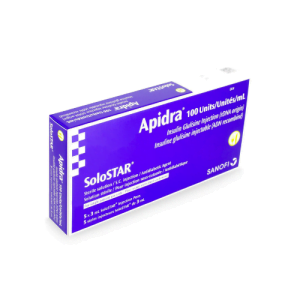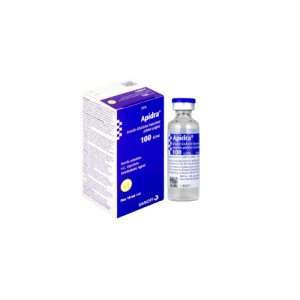What is Type 1 Diabetes in Children?
Type 1 diabetes (T1D) in children is a serious medical condition, where a child’s body fails to produce the hormone insulin. Insulin is a naturally occurring hormone that is produced in the pancreas, which helps the body process glucose and sugar. Glucose is a form of sugar, which is one of the biggest sources of fuel for the body. Without insulin, glucose cannot enter the cells for energy, which then leads to a build up of glucose in the blood. Too much glucose in the bloodstream is dangerous and could lead to life threatening conditions. Kids with T1D need to take insulin injections so that they can survive. When your child is first diagnosed with T1D, it can be frightening. Unlike other medical conditions, T1D has no cure as of yet. However, the good news is that there is treatment for T1D. Your child does not have to suffer throughout their life. If they adopt a healthy lifestyle, monitor their blood sugar regularly and take insulin injections as recommended by their doctor, they will live a healthy and happy life.
However, depending on their age, you will have to work out these changes together. The main change will be to learn how to regularly check and adjust your child’s blood glucose levels. You may need to check your child’s blood glucose levels at least 10 to 12 times every day. It will require a bit of practice before you can learn how to effectively keep their blood glucose levels within a healthy range. However, as you work with your diabetes team and learn more about managing diabetes, you will become confident. Talk to your child about which food they should include in their diet and which foods they should avoid.
It is important that you are supportive and confident while managing type 1 diabetes in children. This will help them become confident too, so that they can deal with the chronic condition. When your child is away from you, they should wear a medical bracelet or necklace that alerts others that they have diabetes. Make sure other caregivers like coaches, teachers, and their friends’ parents understand basic diabetes care. You can give other caregivers information such as a schedule for monitoring blood sugar levels, a meal plan, a treatment plan for both high and low blood sugar levels and contact details in case of an emergency.
Signs and Symptoms of Type 1 Diabetes in Children
The signs and symptoms of T1D in children normally develop fast over a period a few of weeks. Watch out for symptoms such as heavy breathing, vomiting and nausea in your child. If you are worried that these signs and symptoms of type 1 diabetes in kids are serious, you will need to schedule an appointment with a doctor.
The following are signs and symptoms of type 1 diabetes in children:
- Fatigue – because your child’s cells cannot absorb glucose from the food they eat, they will become tired and lethargic.
- Excessive hunger – kids with T1D lack insulin, which helps to convert glucose in the body tissues into energy. As a result, they lack energy which makes them feel hungry.
- Increased thirst – when there is too much sugar in the bloodstream, it will draw fluids from the tissue. This will make them feel thirsty.
- Frequent urination – diabetes causes excess glucose in the body, so your child’s kidneys will try to flush it out through their urine. This will make them urinate much more than usual.
- Weight loss – even though your child may drink and eat more food to reduce their increased hunger and thirst, they may lose weight rapidly. Without the ability to convert glucose from food and use the energy, their body tissues will shrink. Unexplained weight loss is usually the first warning sign that your child may have T1D.
- Blurred vision – too much sugar in the blood may draw fluids from your child’s eye. This may affect your child’s vision.
- Yeast infection – young girls with T1D may develop yeast infections. Small babies can develop diaper rashes that are caused by yeast.
- Fruity breath – when fat is burned instead of glucose, substances known as ketones will be produced. This may make your child develop fruity breath or bad smelling breath.
- Irritability – your child may grow irritable, which may affect their performance in social situations or in school.
Causes
It is not yet known what really causes T1D in children. However, in most people with T1D, their body’s immune system mistakenly attacks the beta cells in the pancreas. Beta cells are responsible for producing insulin. This naturally occurring hormone is responsible for helping glucose convert into energy that the body can use as fuel. Once the beta cells are destroyed, the body can no longer produce insulin, which is what happens in T1D. This leads to a build up of glucose in the blood that can lead to serious health complications if not treated. There are some risk factors that can predispose a child to get T1D. If you come from a family with a history with T1D, there is an increased risk that your child may develop the chronic condition. Also, there are certain genes that make a child susceptible to type 1 diabetes. In addition, exposure to certain viruses may trigger the immune system to destroy the beta cells. This may limit the production of insulin.
Treatment
Children with type 1 diabetes require a lifelong treatment that involves insulin therapy, blood glucose monitoring, regular exercise and healthy eating. You will need to work closely with your doctor, dietitian and diabetes educators to keep your child’s blood glucose levels as normal as possible.
- Medications
Kids with type 1 diabetes require insulin therapy so that they can survive. There are different types of insulin that they can use to treat their condition. Depending on your child’s age and specific needs, a doctor may prescribe a different combination of insulin that they can use.
- Exercise
People with diabetes require exercise so that they can properly manage their condition. Encourage your child with diabetes to exercise regularly. Exercising regularly can help to reduce your blood glucose levels. Keep checking your child’s blood sugar levels so that you can understand how it is affected by exercise.
- Healthy diet
Your child will need to adopt a healthy diet and lifestyle as part of their diabetes treatment. This may include having plenty of vegetables, fruits and whole grains. They may still be able to havell have the occasional sugary meal, in moderation, but make sure it is included in the meal plan. High-calorie, high-sugar foods can be difficult to include in your child’s meal plan.
Disclaimer: Please note that the contents of this community article are strictly for informational purposes and should not be considered as medical advice. This article, and other community articles, are not written or reviewed for medical validity by Canadian Insulin or its staff. All views and opinions expressed by the contributing authors are not endorsed by Canadian Insulin. Always consult a medical professional for medical advice, diagnosis, and treatment.









